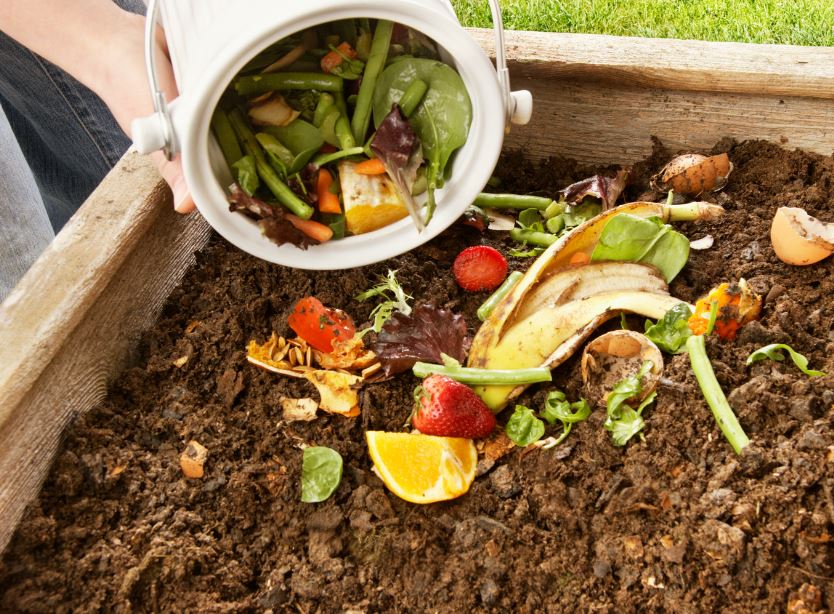15 Easy Ways To Reduce Your Carbon Footprint At Home
Hey folks! Welcome to a guide that’s all about making your home a little more eco-friendly. These are some easy ways to reduce your carbon footprint at home.
You know, sometimes we wonder how we can contribute to a healthier planet without turning our lives upside down.
Well, worry not, because this list is all about those doable, everyday actions that can shrink your carbon footprint right within the comfort of your home.

So, get ready to explore a range of ideas that won’t just make you feel good but will also make our shared home, Earth, a better place for everyone.
In the next few minutes, we’ll cover everything from energy-saving habits to mindful consumption and waste reduction.
Small changes can lead to big results, and that’s what we’re aiming for.
So, let’s embark on this journey together and discover how simplicity can be the key to a more sustainable lifestyle. Ready? Let’s roll!
How to reduce your carbon footprint at home
1. Energy-Efficient Lighting:
Switching to energy-efficient light bulbs, like LED or CFL, is a simple yet impactful way to cut down on your electricity consumption for your smart home.
These bulbs use significantly less energy, last longer, and emit less heat, contributing to reduced greenhouse gas emissions.
Making this switch not only benefits the environment but also lowers your electricity bills over time.

2. Unplug Devices and Chargers:
Believe it or not, even when electronic devices are turned off, they can still draw power when plugged in.
This phenomenon is known as “phantom energy” or “vampire power.” Unplug chargers, appliances, and electronics when not in use to prevent unnecessary energy consumption.
Consider using power strips to easily cut power to multiple devices at once, making it a convenient habit to save energy and reduce your carbon footprint.
3. Waste Reduction through Composting:
Creating a composting system at home not only diverts organic waste from landfills but also produces nutrient-rich compost that can be used to enhance your garden soil.
By composting kitchen scraps like fruit and vegetable peels, coffee grounds, and eggshells, you contribute to a circular economy and minimize methane emissions from decomposing organic matter in landfills.

4. Water Conservation Practices:
Conserving water is crucial for both the environment and your utility bills. Fixing leaks, using low-flow faucets and showerheads, and collecting rainwater for plants are effective ways to reduce water usage.
Additionally, being mindful of water consumption during daily activities, such as turning off the tap while brushing your teeth, contributes to a more sustainable water footprint.
5. Reusable Shopping Bags:
Single-use plastic bags contribute to pollution and harm wildlife. Make a switch to reusable shopping bags made from eco-friendly materials like cloth or jute.
Keep them handy for grocery trips and other shopping excursions to reduce your reliance on disposable plastics and decrease the environmental impact associated with their production and disposal.

The cheap reusable shopping bags that you keep on getting from the stores are just as harmful as plastic. People treat them as disposable which is just as bad. Seriously how many bags do you have laying around? Probably a ton.
So invest in handmade quality shopping bags that you will keep for years. This way, they are truly reusable, not disposable.
6. Energy-Efficient Appliances:
Upgrading to energy-efficient appliances, marked with the ENERGY STAR label, can significantly decrease your overall energy consumption.
These appliances are designed to meet strict energy efficiency guidelines, helping you save on utility costs while reducing the demand for energy production, which often involves burning fossil fuels.
7. Home Gardening and Local Produce:
Cultivating a small garden at home not only provides fresh, organic produce but also helps reduce your carbon footprint.
By growing your own fruits and vegetables, you decrease the need for transportation and packaging associated with store-bought produce.
Additionally, supporting local farmers’ markets and choosing locally sourced goods further minimizes the environmental impact of long-distance transportation.

8. Proper Insulation and Sealing:
Ensuring that your home is well-insulated and properly sealed helps regulate indoor temperatures more efficiently.
This reduces the need for excessive heating or cooling, ultimately lowering energy consumption and carbon emissions.
Simple measures, like adding weather stripping or insulating your attic, can go a long way in making your home more energy-efficient.
9. Carpooling and Public Transportation:
Reducing the number of individual car trips helps decrease carbon emissions from vehicles.
Consider carpooling with neighbors or colleagues, using public transportation, or opting for alternative modes of transportation like biking or walking.
These choices not only cut down on greenhouse gas emissions but also contribute to less traffic congestion and improved air quality in your community.

10. Investing in Solar Panels:
Harnessing solar energy by installing solar panels on your property is a long-term investment that significantly reduces your reliance on conventional energy sources.
Solar panels convert sunlight into electricity, producing clean and renewable energy.
While the initial cost may be a consideration, the environmental benefits and potential long-term savings make it a sustainable choice for many homeowners.
11. Mindful Consumer Choices:
Being a conscious consumer involves making informed decisions about the products you purchase.
Opt for items with minimal packaging, choose products made from sustainable materials, and support companies with eco-friendly practices.
By making mindful choices, you contribute to a demand for more sustainable production methods and reduce the environmental impact of the goods you bring into your home.
And if you really want to reduce your carbon footprint in an easy way, then stop buying bottled water. Grab a refillable stainless steel water bottle and use that.

12. Eco-Friendly Cleaning Products:
Many conventional cleaning products contain harmful chemicals that can adversely affect both the environment and human health.
Switching to eco-friendly and biodegradable cleaning products helps reduce the release of toxic substances into water systems and minimizes your exposure to harmful pollutants.
Look for products with environmentally friendly certifications to ensure their sustainability.
We have an easy DIY window cleaner recipe that you can make with wholesome ingredients.

13. Smart Thermostat Usage:
Installing a smart thermostat allows you to optimize your home’s heating and cooling systems based on your daily routine.
These devices can learn your preferences and adjust temperatures accordingly, leading to more efficient energy usage.
By reducing unnecessary heating or cooling when you’re away, smart thermostats contribute to energy conservation and lower carbon emissions.
14. Eco-Friendly Home Decor:
When refreshing your home décor, consider sustainable and eco-friendly options.
Choose furniture and home décor accents made from responsibly sourced materials, opt for second-hand or upcycled pieces, and incorporate energy-efficient lighting fixtures. We have an article on where to find vintage art.
Buy handmade décor that is made of quality so that it will not be thrown away like cheap stuff.
By making environmentally conscious choices in your home décor, you contribute to a circular economy and reduce the environmental impact of manufacturing new goods.

15. Educate and Inspire Others:
One of the most powerful ways to make a lasting impact is by sharing your knowledge and inspiring others to adopt eco-friendly practices.
Whether it’s through social media, community events, or casual conversations, spreading awareness about sustainable living encourages collective action.
By fostering a culture of environmental responsibility, you contribute to a broader movement towards a greener and more sustainable future.

In Closing: Thanks for taking the time to explore these eco-friendly tips with us! Making small changes at home can add up to a big positive impact on the environment.
We hope you found these suggestions practical and easy to incorporate into your daily life. For those who like to learn more about home trends and safety, check our article about why every home needs a carbon monoxide detector.







